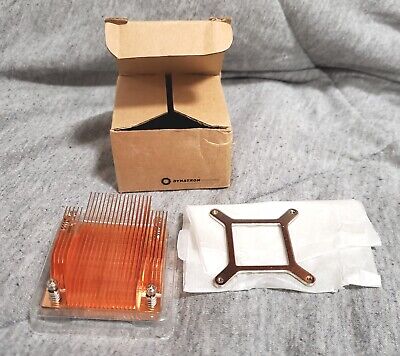I recently picked up an ASRock J5040-ITX mini-ITX board with a Pentium Silver J5040 Gemini Lake Refresh SoC on it. While testing it on an open bench (I literally have the motherboard sitting on a table, with 1/2 inch feet under it), I was pretty shocked to see it rather easily hit 84 C (ambient was probably 24 C; no perceivable air movement). I had planned to put this in a fanless case, but that's not going to happen without some significant throttling.
My first thought was to pull off the heatsink and replace the thermal compound with something higher-performance than I'll bet they used on such a budget board. However, I thought "why stop there?" and I'm wondering if there might be other heatsinks I can put on it. The attachment points of the current heatsink are approximately 44.5 mm x 56 mm (2.7 mm diameter). Is this any kind of standard, or just specific to what ASRock came up with?
My other thought is to just buy a copper heatsink that's the biggest I can find (within 87 mm x 51.5 mm) and let gravity hold it in place, since the case is horizontal.
Update: I pulled off the heatsink and found a second set of holes. There's both the outline for the original heatsink (87.5 mm x 55 mm) and an outline for the second heatsink (45.5 mm x 44.5 mm). In this case, there are only 2 holes at a diagonal arrangement. Rather than being at the corners, the mounting holes are in 10 mm from each corner and set about 4 mm outside of the footprint.
Basically, the second heatsink outline looks a lot like what you'd see mounted on motherboard chipset.
My first thought was to pull off the heatsink and replace the thermal compound with something higher-performance than I'll bet they used on such a budget board. However, I thought "why stop there?" and I'm wondering if there might be other heatsinks I can put on it. The attachment points of the current heatsink are approximately 44.5 mm x 56 mm (2.7 mm diameter). Is this any kind of standard, or just specific to what ASRock came up with?
My other thought is to just buy a copper heatsink that's the biggest I can find (within 87 mm x 51.5 mm) and let gravity hold it in place, since the case is horizontal.
Update: I pulled off the heatsink and found a second set of holes. There's both the outline for the original heatsink (87.5 mm x 55 mm) and an outline for the second heatsink (45.5 mm x 44.5 mm). In this case, there are only 2 holes at a diagonal arrangement. Rather than being at the corners, the mounting holes are in 10 mm from each corner and set about 4 mm outside of the footprint.
Basically, the second heatsink outline looks a lot like what you'd see mounted on motherboard chipset.
Last edited:



